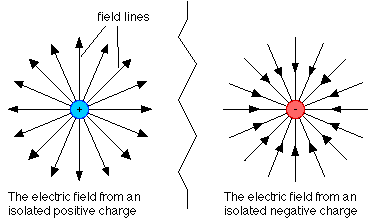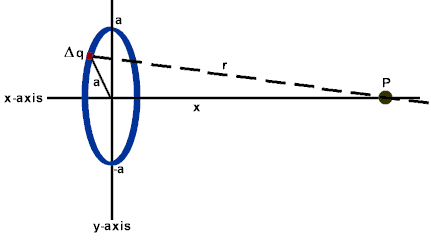|
Did you know?
 8
A spark is caused when the elctrical field in the air
reaches a critical point at which the air undergoes electrical breakdown:
The positively charged nuclei are pulled one way and the negatively charged
electrons are pulled the other way by the electrical field, causing the atoms
in the air to be ripped apart. This is the creation of ions and an extremely
conductive state of matter called "plasma". To learn more about plasmas,
check out our partner module.
8
A spark is caused when the elctrical field in the air
reaches a critical point at which the air undergoes electrical breakdown:
The positively charged nuclei are pulled one way and the negatively charged
electrons are pulled the other way by the electrical field, causing the atoms
in the air to be ripped apart. This is the creation of ions and an extremely
conductive state of matter called "plasma". To learn more about plasmas,
check out our partner module.
|
An electric field represents the forces with which electric charges interact. There are two types of these charges, denoted "positive" and "negative". "Neutral" particles have no charge. As the familiar saying goes,opposites attract. This applies to electrical charges and so, as one might deduce, like charges then repel. The attraction or repulsion is always radial to a point charge, or perpendicular to the surface of a charge.
Simply enough, that takes care of the direction portion of the force. Now, the magnitude of the force depends both on the amount of charge and the distance between the charges interacting. For those who like to see things in mathematical format, it is convention to define the electric field in terms of the force, F, on a positive point charge, qo=1C (unit C is Coulombs), also known as a test charge. As such, the electric field, E, would be E = F/qo since the force due to a point charge is found to be

In the case of a particle accelerator, an electric field is used to exert a force on charged particles, thereby accelerating them. This electric field is generated by two parallel circular rings with opposite charges, located at a distance from one another on a common axis. These charged rings can be treated as a collection of point charges. As such, the electric field between them is found by summing the force on a test charge due to each point in each ring. Since these point charges are actually infinitesimals, however, the technique of integration is used to find the result of the summation of the fields from the two rings along their common axis (The two rings are arranged like two wheels on an axle). Then the approximation that the distance from the ring is much greater than the radius of the ring can be used to simplify the expression to

If you're interested, here is an explaination of integration.

